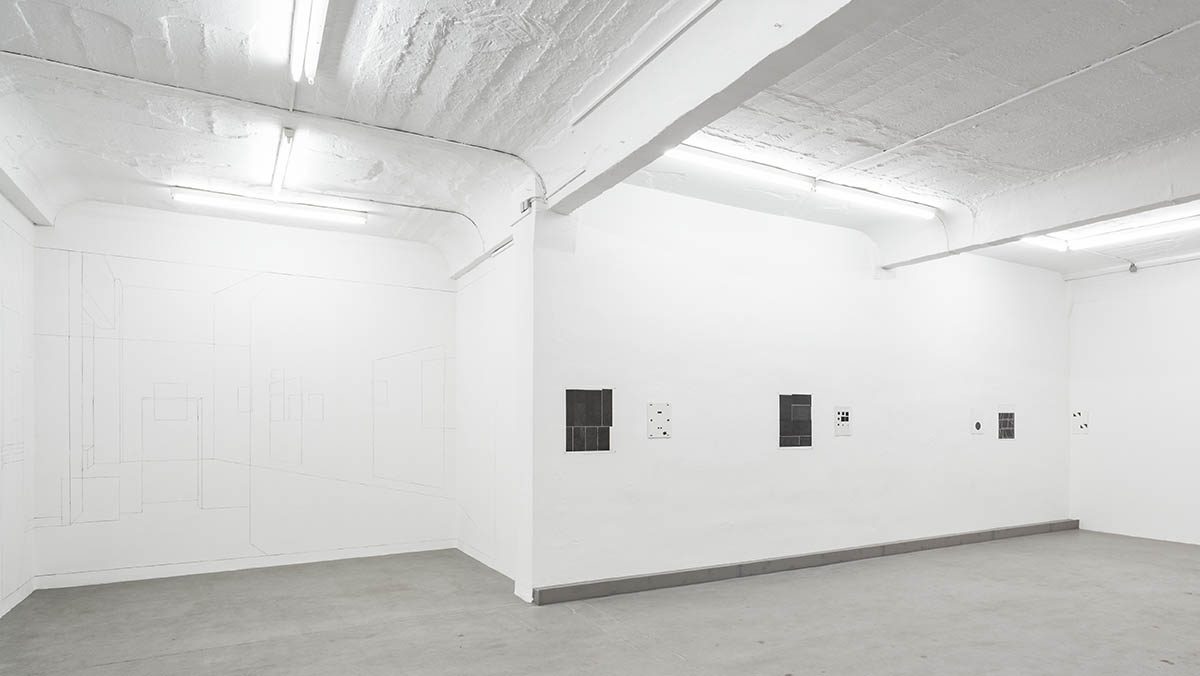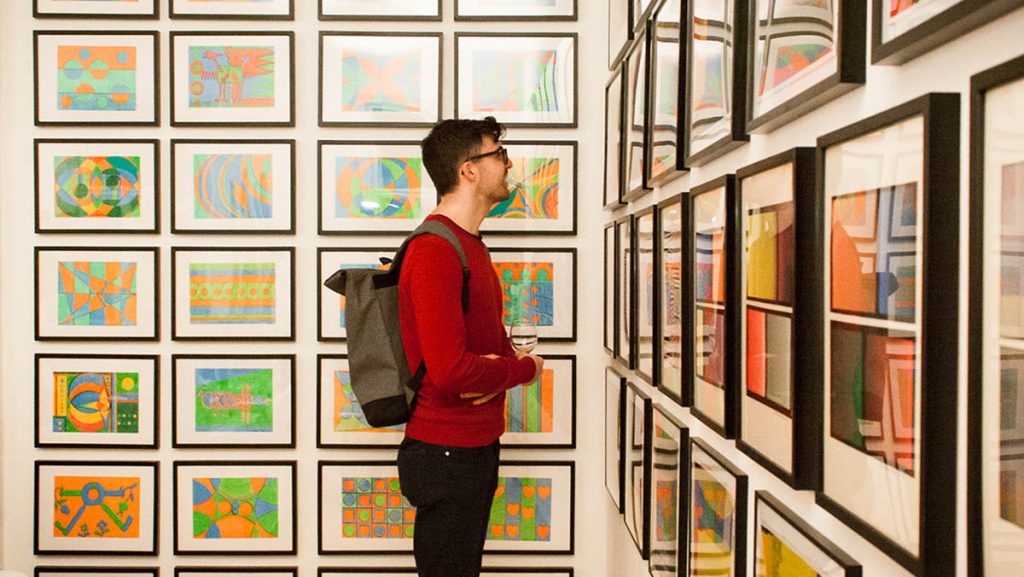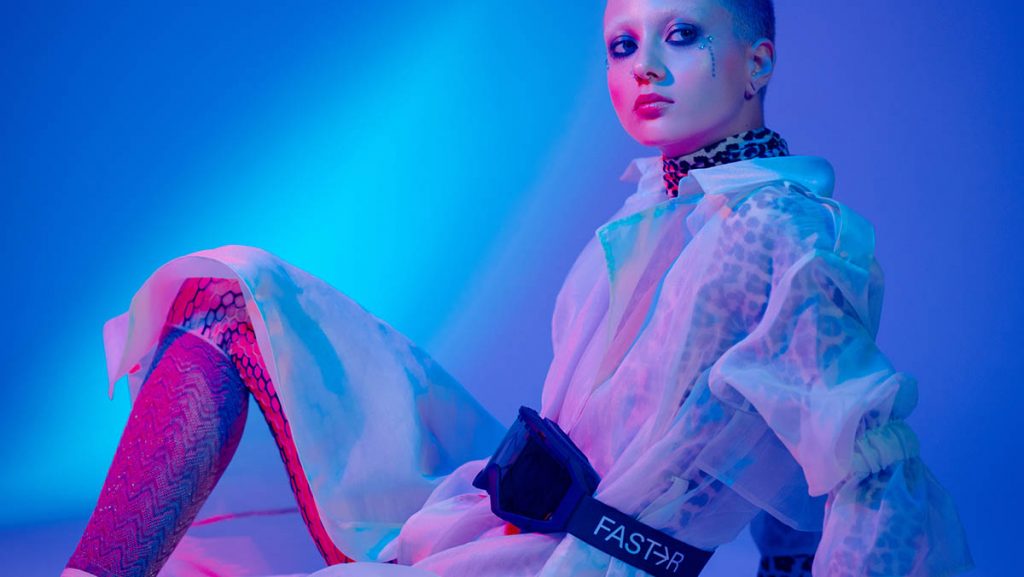Erka Shalari: I was thinking for meanings of works from your artists and maybe a relationship with the pandemic. It was coming into my mind the photographs of Trine Søndergaard with their mourning costumes. In some of them, one could barely see the human. The veil is sometimes seen as a necessity. What could one photograph during the pandemic?
Tobias Posselt: That is a good approach and the association is very obvious, yes, but one must point out that these photographs were taken before the pandemic. But this is exactly what distinguishes the works of some of our artists: that they deal with tipping points, critical situations or fundamental existential questions. Carla Guagliardi, for example, who creates very fragile sculptural set-ups in space or Jan Wawrzyniak, whose pictures seem to suffer from their own destabilization, which hardly reveal anything and which, when viewed, also question our own certainties. I would like to state that for most of our artists crisis is part of their artistic work anyway. After all, that’s the special quality I’m trying to help establish.
Erka Shalari: Here we come to the last question, after the exhibition of Marc Naatzaam’s „Various, Elsewhere, Ongoing“, the gallery is having a following group show entitled „Erich has just left the building. In Erinnerung an Erich Reusch“*. Who chooses these noteworthy exhibition titles?
Tobias Posselt: The titles of the solo exhibitions usually come from the artists themselves, in this case from the conceptually working Dutch draughtsman Marc Nagtzaam, who is now exhibiting with us for the second time. We go along with this with great sympathy but the artists are free to open up their respective perspectives, of course. As for the tribute exhibition for Erich Reusch, the title is an idea of Jan Wawrzyniak, referring to the song „Elvis has just left the building“ by Frank Zappa. And it is true: „Those are his footprints right there …“. In the exhibition, we will mainly show contributions that other artists have created in relation to Reusch’s work or their acquaintance with him. That will definitely be exciting and we absolutely want to meet the standard Erich himself was setting. I just hope very much that we will be able to open again by then.
*Due to the current situation, the upcoming exhibition „Erich has just left the building. In Erinnerung an Erich Reusch“ will be postponed to September 2021.
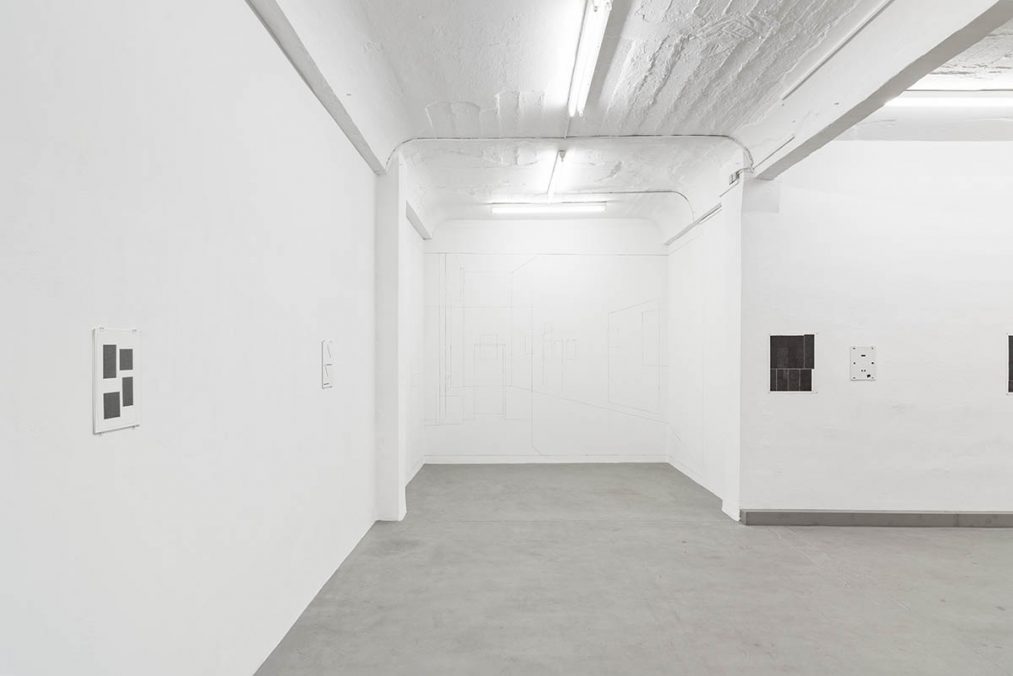
Erka Shalari: Hello Marc, is nice that you are part of this conversation. What works are you showing in the exhibition „Various, Elsewhere, Ongoing“? Can you reveal something about the title?
Marc Nagtzaam: The show consists of 3 different series of drawings: A large wall drawing which documents two exhibitions I made earlier at other spaces; Several small drawings titled ‘Borrowed Space’, which quote geometric designs from book covers, paintings, etc, and drawings that are a continuation of my main output (They are mostly dark, graphite filled drawings based on the idea of repetition, sameness, and difference). The installation brings them all together as one piece. It is a work in which all parts interact on different levels. The title is quite factual in a way. It describes various aspects of the works and the installation. ‘Elsewhere’ emphasizes the fact I wasn’t able to install, or even until this very date, visit the show myself.
Erka Shalari: In the current exhibition at kajetan, you have been creating in situ works as well; how were you working with the space of the gallery, and which space elements did you highlighted?
Marc Nagtzaam: Like I mentioned, I think of my exhibitions as a work in itself. For this show, I created a simple structure, almost like a graphic designer, in which I could arrange the drawings and in which each combination of works could highlight something different. The gallery space can easily be overseen in one view, except for the small ‘cabinet’ at the most faraway corner when you enter the space. This made it perfect for installing the wall drawing, although I had to ‘fold’ the drawing twice to make it fit the cabinet’s dimensions. You almost enter another ‘virtual’ space while both the exhibition spaces merge into one. The wall drawing also interrupted the row of small drawings(all more or less the same size), installed at regular distances, from the series ‘Borrowed Space’, which is interrupted as well, irregularly, by larger, more complex drawings. I’ve always considered my drawings as ‘concepts’, ideas that can be executed several times, and maybe not always necessarily by myself. Due to the circumstances, I couldn’t travel to Berlin, so we asked artist Jan Wawrzyniak to execute the wall drawing, which turned out very well.
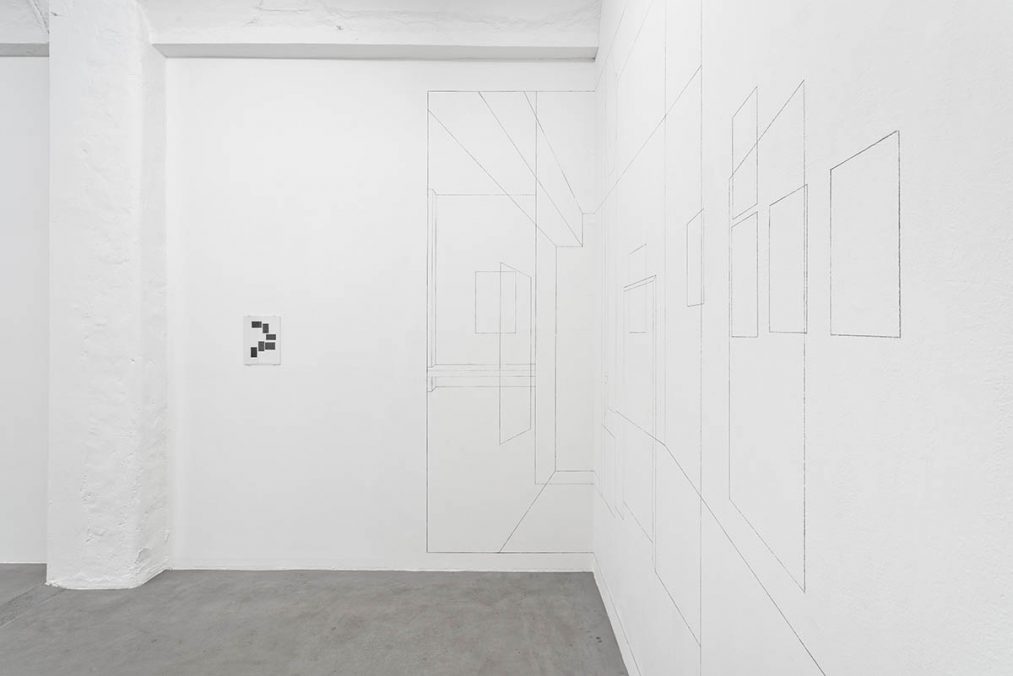
Erka Shalari: How do you feel after installing a show? What does it mean for you that you could not experience the exhibition from close?
Marc Nagtzaam: There is always a very specific kind of concentration quality after making an exhibition; this gets lost when you cannot attend and experience the show; you miss details, the material, walking around, space’s experience, and how the works interact.
Erka Shalari: Your titles look in my eyes as poetries: Regular Features and Borrowed Spaces; Regular Features; Eight Pieces for Eight Corners; Often, Not Always; Nothing Rhymes. How important are titles to works? Tell us something about how they emerge.
Marc Nagtzaam: Although I try to minimize direct references in my work (impossible of course), I think titles also enrich ways of viewing and reading the work. They may tell something about how I approach my work or point out certain elements of the drawings. Besides, I like the tension, or confusion, between words and images, together with the idea to cover a work purely by description, which is somehow challenging. You probably fail, but trying over and over may bring unexpected thoughts. Most titles are selected from songs or texts found in art magazines; and are mostly rather neutral descriptions. The titles are more like a parallel track; there is no direct link between the work and the title. However, this doesn’t mean they are interchangeable.
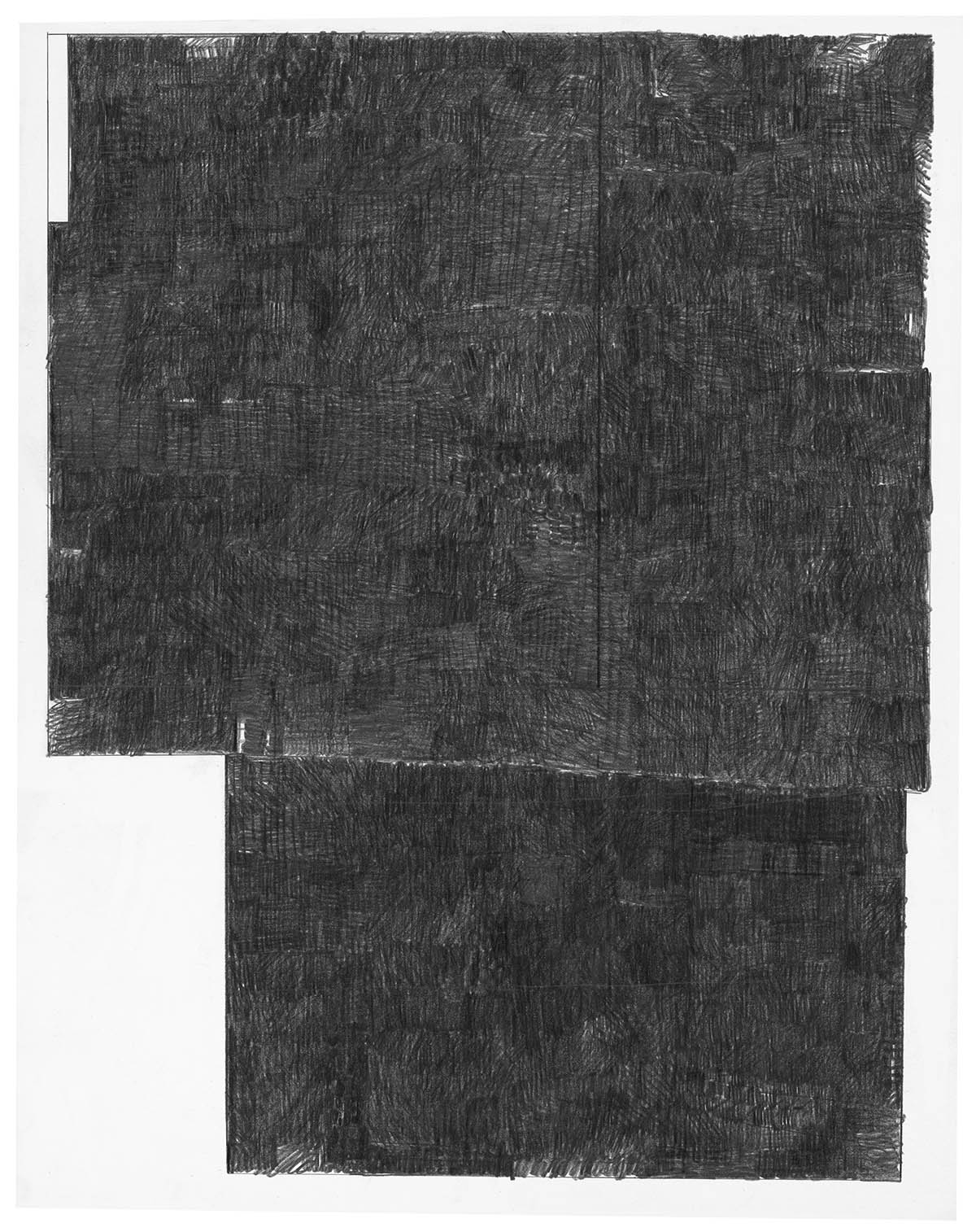
Erka Shalari: You work a lot with ready-made, found photography, book covers, newspapers, posters, paintings. What fascinates you about them, and what makes you enclose them in your work?
Marc Nagtzaam: Douglas Huebler’s quote: ‘The world is full of objects, more or less interesting, I wish not to add any more’, has always been inspiring to me. I like the idea of working with materials that are already available and even familiar. Observing, choosing, rearranging pieces in a different manner, and transforming them into another format or technique has been a working method that keeps producing new concepts for my drawings. Using existing material is also a way to add other voices and other kinds of thoughts to my practice. It is a way of creating a dialogue with the ‚world’ and context within which I show my work. The criteria are the same as the text fragments I collect. I’m looking for a kind of neutral, familiar material to be used as bricks to build something new.
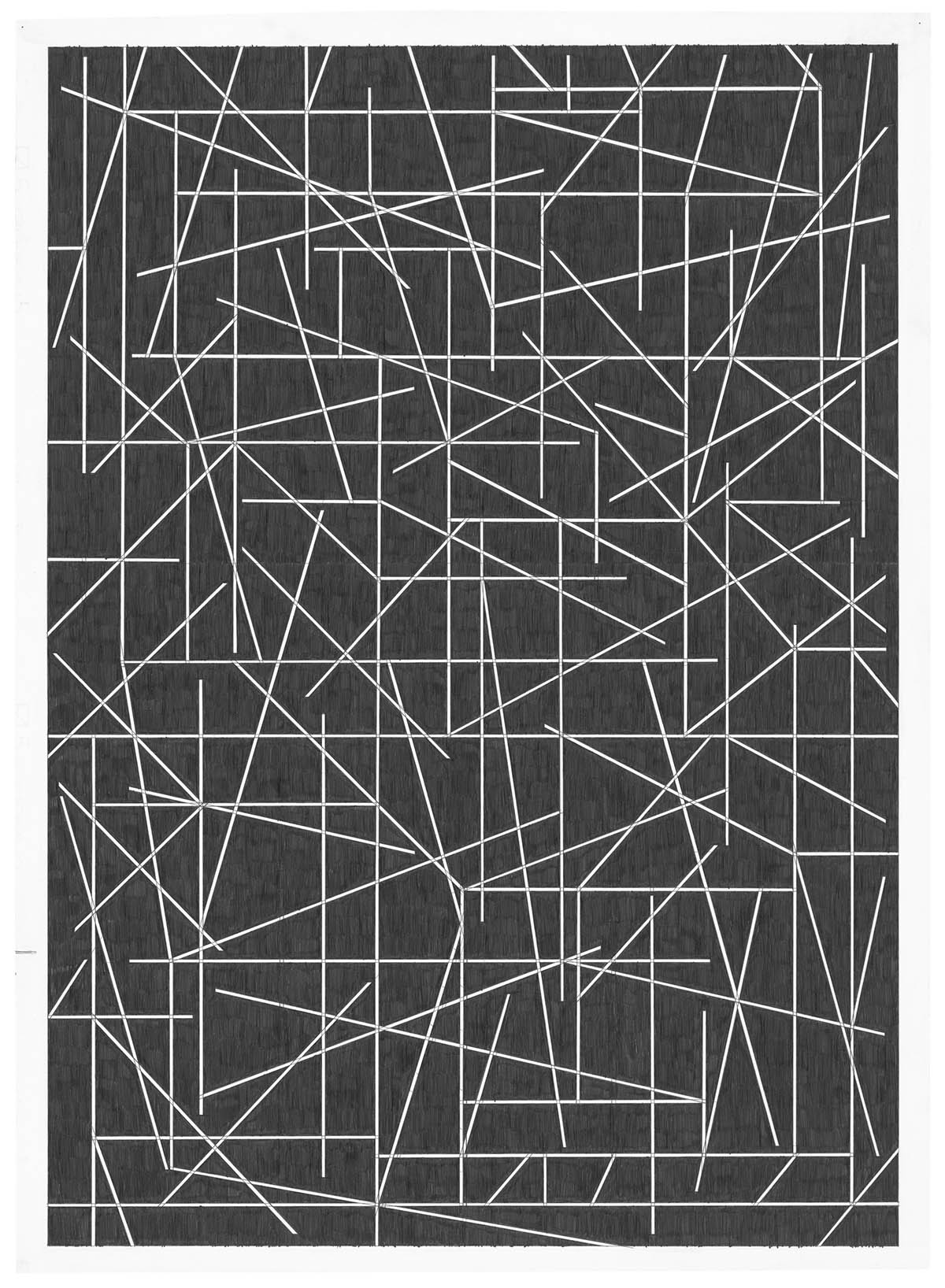
Erka Shalari: Often, you „destroy“/delete the found content and collage it with other found materials or re-create new ones with grids, and lines). Can you explain to us your approach?
Marc Nagtzaam: Within my drawing, I want to create a kind of undefined space, where nothing should be fixed or static, and where the time, the moment of creating, and the one of experiencing the drawings is important and becomes almost palpable. Furthermore, I like to include all kinds of contradictions. The dark drawings may look ‘heavy’ while at the same time, they are put against the wall occupying no space. The white forms you’re looking at aren’t drawn but show the white paper. There is a certain denial of what you are looking at. A specific content, and special content from found material, may negatively confuse this or might be distracting. References will appear by themselves. I have no intention to direct the meaning of the works.
Erka Shalari: It can not be left unmentioned the fact that you are a co-founder of Roma Publications Amsterdam. What kind of books do you publish there? Since the year 1998, you have also been publishing with Roma P. ten artist books of yours. Why is publishing important?
Marc Nagtzaam: My artist book ‘(SOME)’ marked the beginning of Roma Publications in 1998. Since then, I’m still involved as an artist or sometimes as a designer. However, it is mostly Roger Willems and Mark Manders, who really created an independent and refreshing platform with a strong program. Although the scope has increased, Roma still feels like a group of friends trying to make interesting, beautiful books. The range of publications stays unpredictable: varying from vinyl records to artist publications and photography magazines.
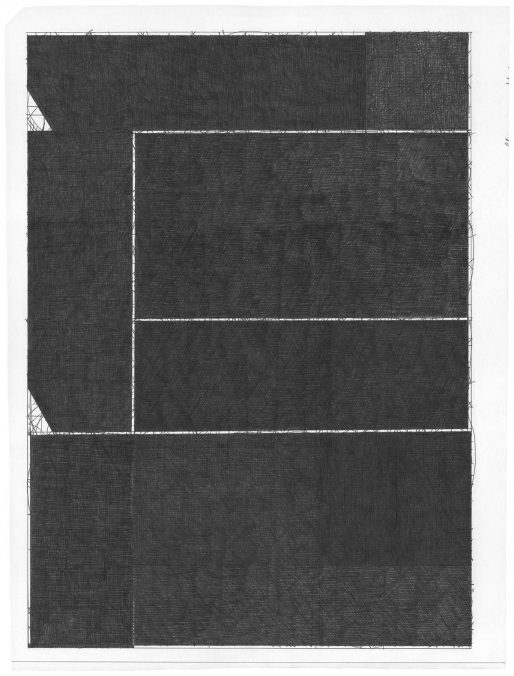
marc nagtzaam Two Improvisations, 2020 | 59,1 x 45,5 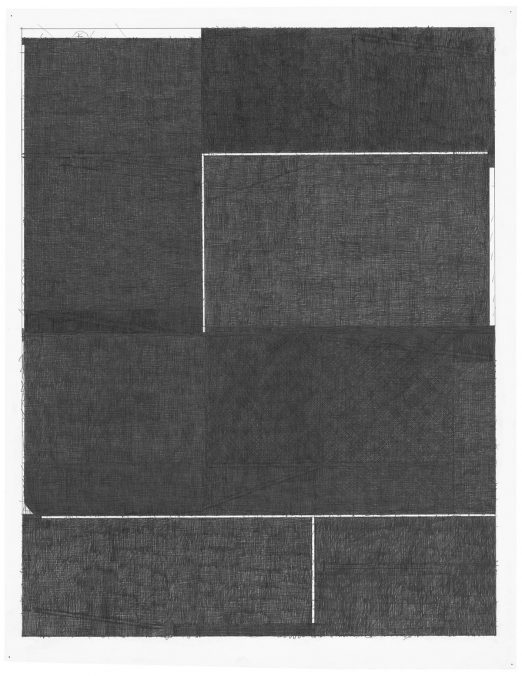
marc nagtzaam Untitled 1, 2020 | 57 x 42,9
Marc Nagtzaam | Two Improvisations | 2020 | 59,1 x 45,5 cm | Graphite on paper | Courtesy Marc Nagtzaam & kajetan Berlin
When making books, I like to explore the book’s space, the sequence of images, and the paper’s tactility in a way that suits the best way to the selection of works. Ideally creating something new – the book as an artwork in itself; almost to look like the made drawings were created especially for the book. Ideally creating something new – the book as an artwork in itself, almost to look like the made drawings were created especially for the book. I wanted to (re-)create a different format for each book, from a ‘classic’ catalogue to a book consisting entirely of an almost unreadable text. Then books have the power to be accessible, are relatively cheap and can be distributed worldwide. You reach a wide range of people who otherwise would never see your work.
Erka Shalari: You live and work in Hoofdplaat. What is the inspiration that this place gives to you? Can you tell us about an interesting day in this dutch city?
Marc Nagtzaam: Hoofdplaat is a small village, close to De Schelde, the river connecting the North Sea with Antwerp. It’s a quiet area, mostly farming and a bit touristic. So an ‘interesting‘ day would consist of making a long walk, enjoying the view of the countryside, and working at my studio for the rest of the day. Or driving to Antwerp, Ghent or Brussels, cities which are relatively nearby. This may sound boring, and it is, but the place where I work itself doesn’t inspire my practice; it never has. Books, magazines, seeing other artist’s work are more important. However, I always enjoy driving home between the meadows and rows of trees.
Erka Shalari: Thank you dear Tobias and dear Marc!
Exhibition duration „Various, Elsewhere, Ongoing“: 5 December 2020 – 13 February 2021
Address and Contact:
kajetan Berlin
Raum für Kunst
Gneisenaustraße 33, Fabrikgebäude, 1. Hof
www.kajetan.berlin




